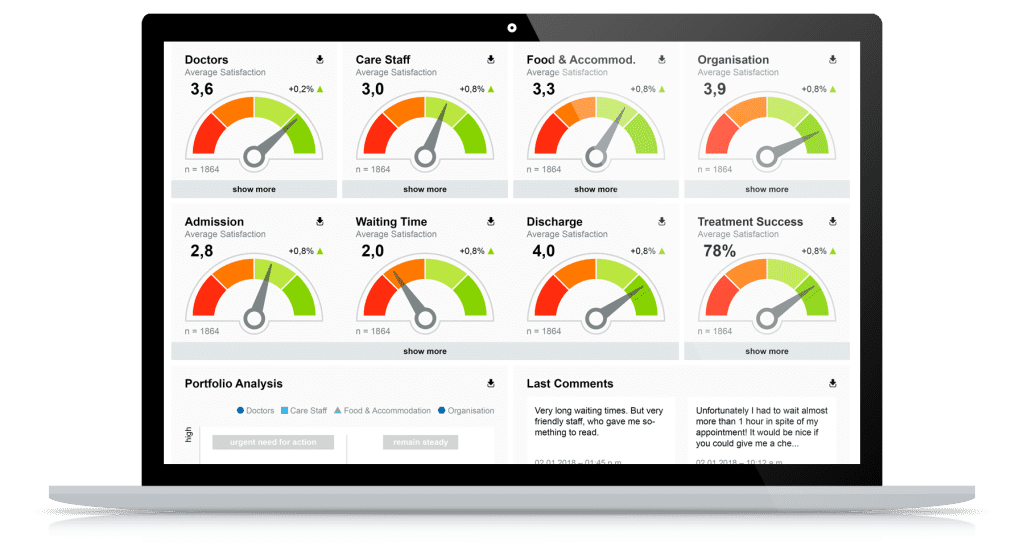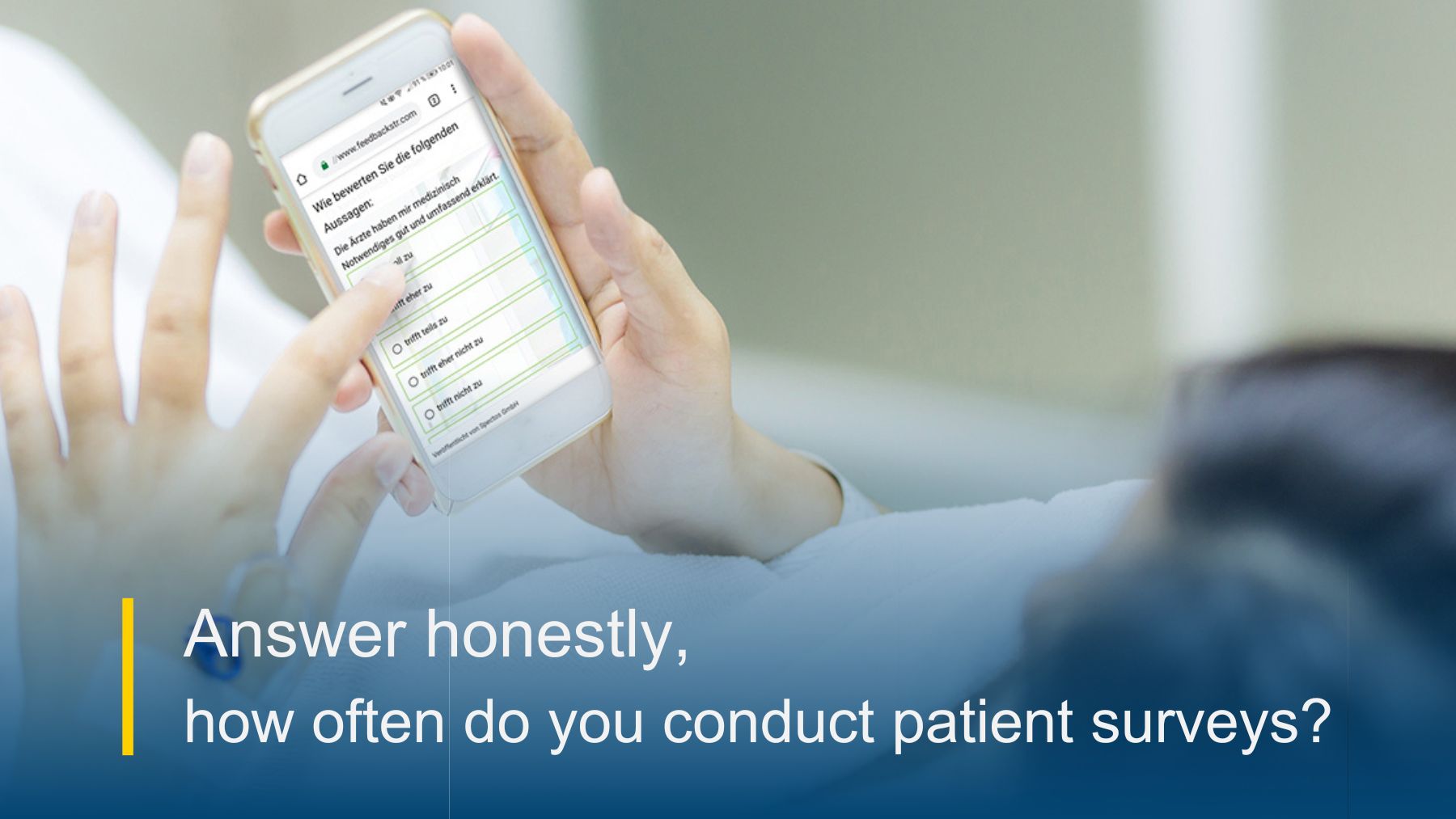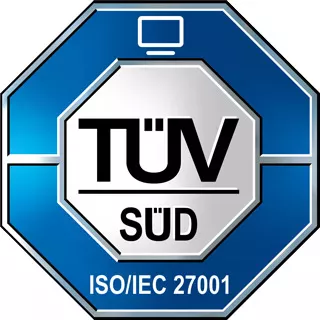Should you measure patient satisfaction to improve service quality? A definite YES!
In the healthcare sector, regular surveys provide valuable information about the quality of hospital services. However, experts differ on the added value and frequency of surveys. For each planned hospital stay, most patients make a conscious decision to choose a particular healthcare facility based on careful research, the advice of their physician, and information from friends and family. While patients’ needs and requirements vary widely, there is one common factor that drives their choice of hospital – a high level of measured patient satisfaction.
Germany’s ‘Focus’ magazine did a ranking of the top 10 hospitals in Germany. They have found a strong correlation between high patient satisfaction, a good image and economic success. Good reviews and recommendations mixed together with critical comments from other patients can significantly influence patient flow and service utilization. Social media is also another determiner for patients. A negative reputation on social media can lead to long-term damage for a healthcare organization. Measuring high patient satisfaction is no longer ‘nice to have’, but a must for long-term success and survival. A complete and thorough quality management system that consistently takes the pulse of patients is key to high service quality and satisfied patients.
Service excellence is no accident: How patient surveys influence quality management
How do the top clinics in Germany differ from those that do not appear in the ‘Focus’ ranking? High quality service in the healthcare sector is no coincidence. It is part of a continuous quality management system, which selectively picks up, analyzes, critically questions and optimizes important criteria in the interaction with patients. For example, successful hospitals constantly incorporate feedback from their patients when designing their business processes.
Although more than 75% of all clinics conduct regular patient surveys, only about 30% rate their benefits as high
Patients surveys are commonly known as instruments for quality management and are also carried out by most clinics, but their benefits are estimated to be rather low. According to a study by M+M Management + Marketing Consulting GmbH, more than two-thirds of hospitals stated that patient surveys often do not highlight causes for patient dissatisfaction nor allow them to quickly respond to critiques, as shown above. Additionally, a lack of time and acceptance among employees means that the benefits or added value of these surveys are poorly valued in the everyday operation of a clinic or hospital. However, there is no denying the fact that when you measure patient satisfaction on an ongoing basis, it brings tremendous benefits to everyone involved.
Measure patient satisfaction the right way: Not selectively and infrequently, but holistically and continuously

Paper questionnaire challenges: due to the high costs involved in using this survey method, hospitals only rate patient satisfaction at irregular intervals.
It is not without reason that successful hospitals differ in the frequency and manner in which they conduct patient surveys. When continuously deployed, patient surveys provide authentic insights into the patient-related treatment process and patient satisfaction. They can reflect the patients’ experiences, expectations and wishes and provide important impulses for optimization. For example, when a survey reveals that patients are dissatisfied with their meals, they may consider switching providers. Patient surveys can also be used for the early detection of existing weaknesses or systematic errors. If, for example, complaints about long waiting times accumulate, this can be an indicator of cumbersome processes or inefficient intermediate steps. Lastly, feedback from patients can also provide an insight on the overall employee experience of healthcare staff. Less positive assessments may be indications of a tense working environment, suboptimal work processes or disgruntlement of individual employees.
Omnipresent and versatile communication channels are key to obtaining the voice of your patients
The true added value of patient surveys as a tool for patient satisfaction only really becomes apparent if they are carried out consistently and, most importantly, permanently. But how can this succeed without additional investments in personnel and time?

Multi-channel surveys simplify patient surveys and, through their popularity, repeatedly encourage feedback.
The AMEOS Group is a leading example, by taking advantage of digitization and relying on multi-channel patient satisfaction surveys in which feedback is continuously collected via various communication channels at all times and in all hospitals and departments. The traditional paper questionnaires are used also and are digitized and combined with the feedback from the other survey channels. The differing channels can be adaptable to the habits of patients in providing a comfortable, accessible and an easy user-friendly platform. This approach has shown to increase responsiveness.
How can I measure the overall satisfaction?
Thanks to the technological advancements of automated data analysis, quality managers and management teams are not presented with a deluge of data. Instead, the information is prepared according to criteria that is important for them and neatly visualized in a web application. Without any prior knowledge of IT or technical know-how, an organization can see the satisfaction levels of doctors, nurses and other relevant information by just having a quick glance at the application. The real-time presentation of results expands further the ability to enable an institution to react immediately to critical events.

Accumulated results of patient satisfaction surveys in a sample view of the Spectos RTPM platform.
Spectos Healthcare has developed a quality management framework for patient surveys that easily incorporates regardless of time and place, text messaging, email, short link, smartphone apps, stand-alone terminals, QR codes and tablets. The innovative use of cloud technologies eliminates the need for an elaborate evaluation process. All data is automatically transferred to the real-time performance management suite (RTPM). In this solution, all information is prepared for a user. At the touch of a button, a tailor-made Healthcare Cockpit provides QM staff with targeted results and reports. By using numerous filter and analysis options, a staff member can visualize all results from across all facilities within a hospital. Information can be broken down right to individual departments and wards. By measuring your patient satisfaction, you can quickly derive a corresponding need for action and implement sustainable, quality-assuring measures.
Conclusion: Measure patient satisfaction and benefit from it
Patient surveys are an indispensable tool for quality managers to improve service quality and patient satisfaction. Thanks to technological advancements, it is easy to integrate patient surveys for quality management purposes continuously and without additional resources into everyday hospital life, and to obtain detailed information on processes on an ongoing basis by means of automatic evaluations. Quality managers can specifically address, optimize and reduce deficits and at the same time sustainably improve the image of their healthcare facility and the satisfaction of all patients.
Try it out now: Sample of our digital patient surveys:
Events, news and much more – never miss anything via our LinkedIn channel!








